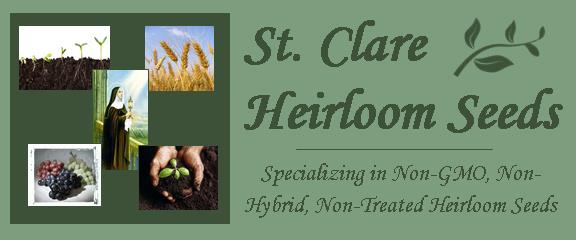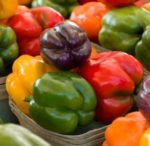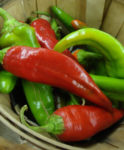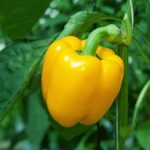Pepper Seeds
Scroll down to see seeds for sale!
Technically a fruit, the two main types of peppers are hot and sweet, ranging in color from bright orange to deep purple, and grown in many different shapes and sizes. Most peppers start out as green and somewhat bitter, but left to mature, bell peppers will get sweeter as they turn orange, yellow and red, while hot peppers also change color and will get hotter. Thought to be one of the first cultivated vegetables dating back over 6,000 years ago to Peru and Mexico, archeologists have found chili pepper seeds that are thousands of years old.
The most popular pepper is the bell pepper. Versatile and easy to grow, bell peppers can be eaten raw in salads or served with dip, or roasted, stuffed and even pickled, and can be used to add pizzazz to virtually any recipe, from sauces, soups, and frittatas, to stir-fry, pizzas and tacos. For maximum health benefits, eat bell peppers raw, or sauteed slightly, as they lose nutrients from high heats.
Peppers contain vitamins A and high levels of C, potassium, folic acid and fiber, along with antioxidants, but note that red peppers have up to 11 times more vitamin C than green peppers. Peppers contain capsaicin, which boosts metabolism by raising body temperature. Capsaicin also protects peppers by slowing the growth of fungi. Spicy peppers are wonderful for relieving sinus congestion and lessening chance of a sinus infection.
If you are wondering which peppers are more spicy, there is a scale which measures their heat, called the Scoville Heat Units. Bell peppers are within 1-100 SHU, while some hotter peppers are in the 30,000 – 50,000 SHU, or higher range.
Peppers don’t tolerate extreme cold, so plant your St. Clare pepper seeds after all chance of frost has passed, and wait until evening temperatures are consistently 60 degrees.




